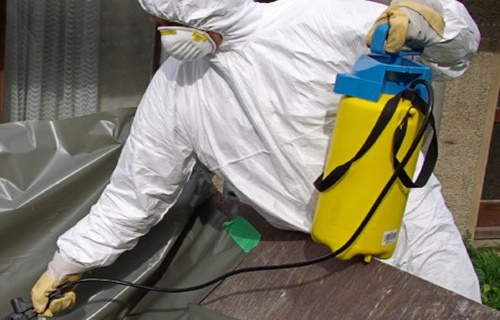How to Safeguard From Asbestos in Your Home

Before the 1980s, asbestos was used in various construction materials as the industry rushed to exploit cheap and versatile material. Pipes, concrete, joint compound, insulation, electrical wires, floor shingles, roofing and siding, windows putty, paint, linoleum, and other products present in buildings contained asbestos in some measure.
People living in older homes have to seriously consider the possibility of having asbestos in their house and avoid making the mistake that many homeowners and individuals have made before when working with asbestos: concluding at some point that simply because they cannot see the fibers, it means that asbestos is not there.
For an untrained eye, it is impossible to tell whether a material contains asbestos, so homeowners should treat any product they suspect as if it contains asbestos and leave it as it is. Generally, asbestos can be found in two primary forms in buildings built before the 80s:
- in firmly bound material: vinyl floor tiles, cement sheets, bitumen-based waterproofing, imitation brick cladding, and textured decorated coatings.
- in loosely bound material: insulation products for hot water pipes, hot water systems, stoves, and ceiling insulation
The loose asbestos fibers are also referred to as "friable"; if disturbed, friable asbestos products are dangerous because the fibers can quickly get into the air and inhaled by everyone living in the area. It is why it's best to have professionals handling asbestos-containing materials when:
- planning a remodeling of your home - it can disturb building materials
- there are damaged materials in your house - crumbling drywall or insulation that is falling apart
One of the methods of safely handling asbestos is abatement: removing or mitigating the effects caused by this dangerous mineral. The first step of the abatement process is inspecting the suspect material for asbestos and determining its hazard level. If the exposure risk exists or the renovation or demolition will impact the asbestos-containing material, a safe abatement plan must be prepared before removing or otherwise handling the toxic material. Hiring experienced professionals from our list of partnered contractors can be a valuable help, as all listed professionals are certified and familiar with the local, state, and federal laws of abatement.
However, it is essential to note that even if you have asbestos-containing materials in your home, neither abatement nor removal might be necessary, as undisturbed and undamaged products are usually safe for the inhabitants. In such circumstances, to further ensure the excellent condition of the materials in question, it is highly recommended to avoid disturbing them by:
- using power tools
- walking on corrugated asbestos cement roof sheets
- using abrasive cutting or sanding discs
- leaving asbestos products in places where they might be crushed or broken
- using high-pressure hoses
- using compressed air
- cleaning the area with dry cloths
- children and pets entering the area
- performing any remodeling or renovation procedure involving the area with asbestos products
When It Comes to Asbestos, Power Tools Are a Prohibited Equipment
Undertaking structural modifications or remodeling in older homes is a risky business. Awareness of where asbestos materials might lurk is crucial, as it will help avoid disturbing the places in question until safety measures are taken. Specific tools and equipment should never be used on asbestos or asbestos-containing material because they can release asbestos fibers into the air:
- high-pressure water spray
- jets
- angle grinders
- sanders
- saws
- drills
- compressed air
- brooms
Knowing about where asbestos materials might be in your house is crucial to avoid disturbing the toxic material and exposure to its microscopic fibers. Furthermore, it's advisable for house owners to adopt a responsible approach during DIY home improvements. Actions like using high-pressure water jets to wet the surfaces may increase the spread of loose fibers or dust. Power tools used for modeling or shaping asbestos-containing products or compressed air on asbestos cement will contribute to airborne dust and hazardous debris.
Dry-sanding, wire-brushing, or scraping surfaces to prepare them for painting also increases the likelihood of releasing fibers and generating toxic dust. Sliding one asbestos sheet over the surface of another when packing or clearing the area may damage the surface of the materials and result in tiny airborne asbestos particles.
If possible, avoid walking on corrugated asbestos cement roofs when attempting to repair or replace them, as they can be weathered, and breaking them poses the danger of asbestos inhalation. Leaving asbestos cement products around the garden or where they may be broken further increases the risk of asbestos contamination.
